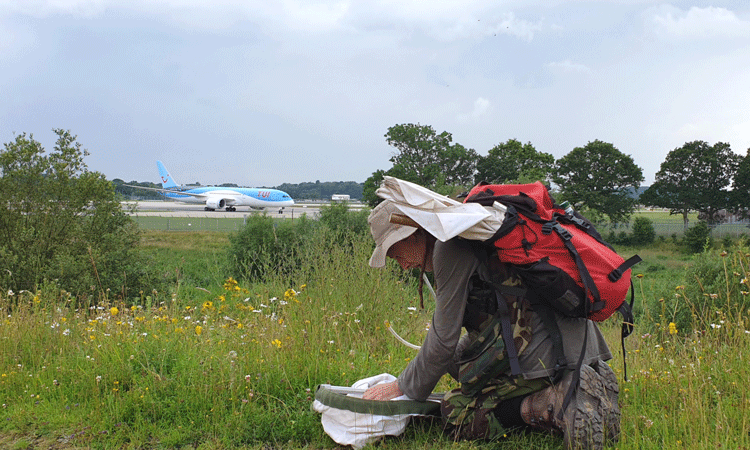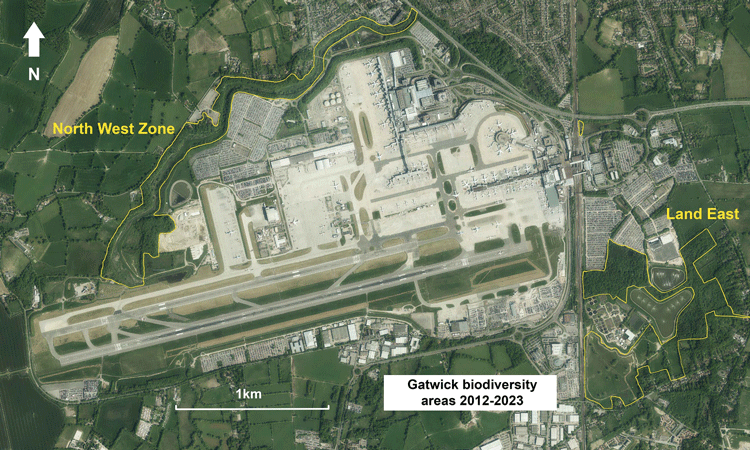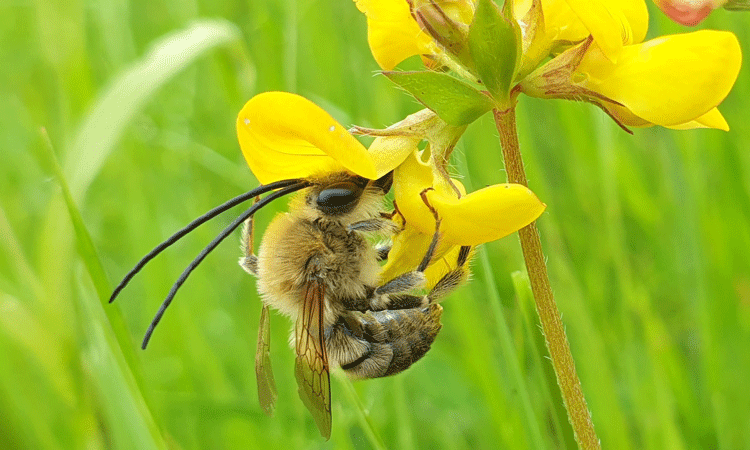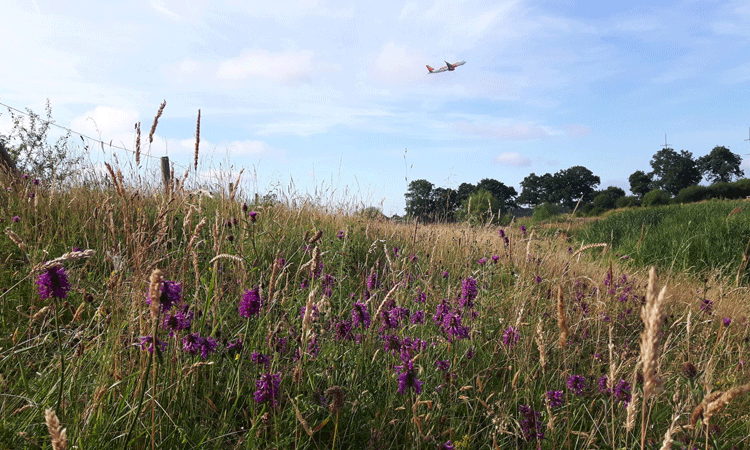Protecting woodlands, wetlands and willows under London Gatwick’s Biodiversity Action Plan
Posted: 23 November 2023 | Rachel Bicker | No comments yet
International Airport Review caught up with London Gatwick’s Biodiversity Advisor, Rachel Bicker, to learn about the work of the airport’s Biodiversity Action Plan and how it aims to protect and encourage biodiversity on 75 hectares of its land.


c: Rachel Bicker
The launch of the Biodiversity Action Plan
When you think of a major international airport, the first image that comes to mind is unlikely to be woodlands, wetlands and thousands of species of plants, animals and fungi.
But for us here at London Gatwick, we are blessed with 75 hectares of woodlands, grasslands and wetlands within our airport boundaries.
And this hasn’t happened by accident. In 2012, London Gatwick launched its Biodiversity Action Plan (BAP) to drive the protection and enhancement of these 75 hectares of our non-operational landholdings. This has helped us to protect over 2,400 different species of plants, animals and fungi.
Join our free webinar: Revolutionising India’s travel experience through the Digi Yatra biometric programme.
Air travel is booming, and airports worldwide need to move passengers faster and more efficiently. Join the Digi Yatra Foundation and IDEMIA to discover how this groundbreaking initiative has already enabled over 60 million seamless domestic journeys using biometric identity management.
Date: 16 Dec | Time: 09:00 GMT
rEGISTER NOW TO SECURE YOUR SPOT
Can’t attend live? No worries – register to receive the recording post-event.


c: Rachel Bicker
Over the past 11 years, the BAP has evolved and developed. We were delighted our Biodiversity Action Plan was recognised at the ACI Europe Best Airport Awards 2023 earlier this year, where we won the Eco-Innovation award, for demonstrating exceptional environmental performance through an innovative project.
Elements of BAP
The 75 hectares are collectively called Gatwick’s biodiversity areas and are dedicated to wildlife conservation and the local community. A range of habitats are located in the biodiversity areas including ancient woodland, rivers, floodplain meadows, old hedgerows, scrub mosaic and wildlife ponds, providing a habitat for a wide range of species including rare and threatened flora and fauna.
The BAP was initiated by London Gatwick’s environmental health and safety team in partnership with the grounds maintenance team and the Gatwick Greenspace Partnership (GGP). It provides a framework for managing and enhancing our biodiversity areas to enhance, through setting improvement targets, scheduling actions and monitoring performance through a robust ecological monitoring programme. The BAP and its delivery are also aligned to The Wildlife Trust’s Biodiversity Benchmark Standard, which is designed to complement the internationally agreed standard, ISO 14001, and achieve continual biodiversity enhancement and protection. London Gatwick is proud to have retained this award for nine consecutive years.
Community support
A critical element of the BAP is the biodiversity monitoring programme delivered by our Biodiversity Advisor, technical specialists, and community volunteers. In 2021 our monitoring programme involved 22 different survey methodologies, including bat, reptile, bird, invertebrate, mammal, fungi and botanical surveys.
The results of these surveys are fundamental to improving our understanding of the biodiversity areas and the species that rely on them. We share the results with the Sussex Biodiversity Records Centre, which compiles biological records from across the region, contributing to scientific understanding. London Gatwick has 35,570 biological records, comprising 2,490 different species across our landholdings. This includes 74 rare, declining, or protected species, such as the great crested newt, several bat species, and the nationally scarce long-horned bee.


c: Rachel Bicker
Community involvement in our biodiversity areas is another crucial element of our approach to biodiversity, ensuring the project is raising awareness about biodiversity with our staff and local community members. The GGP oversees volunteering and community involvement, which has achieved significant community participation over the years, through hosting both volunteering and educational events. Educational events involve introducing local schools and colleges to wildlife conservation practices and visits from university students to witness conservation in action. In 2022, Gatwick held 75 volunteering and 56 educational events on our sites.
Planned habitat maintenance and enhancement works are undertaken in our biodiversity areas to improve their wildlife potential. Annually, our BAP includes a range of actions to be delivered including coppicing, hedgerow creation, the establishment or maintenance of ponds, and invasive species management. Some of these works involve specialist contractors but also crucially, corporate volunteers and members of the community.
Gatwick is surrounded by three main rivers including the River Mole, Crawter’s Brook, and the Gatwick Stream. In this context, the biodiversity areas play a key role in safeguarding our airport operations by reducing flood risk potential through provision of flood storage capacity. Our Land East Zone flood attenuation field provides 186m3 of storage capacity, and our North-West Zone provides floodplain meadows – offering both biodiversity benefit and reducing flood risk potential downstream of the airport.


c: Rachel Bicker
To conclude
London Gatwick is committed to protecting and enhancing biodiversity and has robust plans for building on our efforts thus far. In the short-term, we are focused on progressing a wildflower road verge scheme to improve the connectivity and wildlife potential of our existing greenspaces. We are also in the process of establishing strategic partnerships with biodiversity organisations in the region to maintain leading standards and continually improve our approach. Further, we are also trialling biodiversity net gain methodologies, enabling us to quantify the biodiversity performance of habitats while keeping in line with latest standards.


Stay Connected with International Airport Review — Subscribe for Free!
Get exclusive access to the latest airport and aviation industry insights from International Airport Review — tailored to your interests.
✅ Expert-Led Webinars – Gain insights from global aviation leaders
✅ Weekly News & Reports – Airport innovation, thought leadership, and industry trends
✅ Exclusive Industry Insights – Discover cutting-edge technologies shaping the future of air travel
✅ International Airport Summit – Join our flagship event to network with industry leaders and explore the latest advancements
Choose the updates that matter most to you.
Sign up now to stay informed, inspired, and connected — all for free!
Thank you for being part of our aviation community. Let’s keep shaping the future of airports together!

















